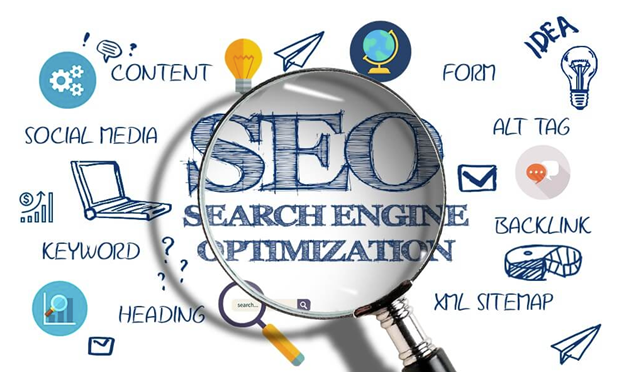Google Ads is undoubtedly the biggest provider of search advertising today. The world’s top companies rely on Google ads to promote their products and services and convert those engagements into profit, and so do small businesses who are new in the game. It’s no wonder why Alphabet, Google’s parent company, gets more than 80 percent of its revenue from Google Ads.
As a tool, Google Ads helps small players compete in the market even when they don’t have a colossal budget to spend. So if you’re a small business looking for a cost-effective way to get your products and services out there or a longtime player looking to up your game, Google Ads is the way to go.
Let’s help you set up.
Table of Contents
What Are Google Ads
So what exactly is Google Ads? Simply put, Google Ads is an advertising program run by Google. Formerly known as Google Adwords, the infamous platform was rebranded into Google Ads in 2018.
The logic behind the program is straightforward. Every time a user searches for something on Google using a keyword (search term), they get a list of results, one of which can be an ad promoted by Google that is relevant to what the user searched for.
These results usually appear at the top of the page and carry the “Ad” tag to signify that they are promoted content.
Google Ads Basics
To understand how to use Google Ads fully, you need to understand a few basic terms.
A keyword is the search term the user types on the Google search engine to look for something online. When creating your ads, these keywords are what you will target and keep in mind. Every time a user uses that exact keyword or something relevant to it on Google, your ad will be shown.
However, one keyword can have many marketers competing for it, and so Google uses a bidding system that allows each marketer to bid for the maximum amount they are willing to pay for each click on their ad.
You might think that this is a dead-end for low-budget players. But aside from the bid, Google considers other factors like the quality of your ad and the relevance of the landing page. All these make up what is called a Quality Score. Your marketing bid is multiplied by your Quality Score to determine your Ad rank.
Google then compares your Ad rank with other competing marketers to calculate the actual cost per click (CPC).
There are currently different types of Google ad campaigns. Feel free to explore and experiment with each.
- Search campaign — appears as text-based ad results only
- Shopping campaign — showcases your product in a much more visual way with a product image and a shop link
- Display campaign — can be a video, text-based, or image-based banner that appear on Google-owned and related websites, platforms, and third-party apps
- Video campaign — may appear as pre-roll ads on YouTube videos that can be both skippable and unskippable, or they can appear as discovery ads on the YouTube search results
- App campaign — promotes your ads in app-based marketplaces without the need to create a specific ad for you. Google takes your assets and makes the ad automatically.
Now that you’ve successfully taken the crash course on Google Ads, it’s time to set up your first campaign.
Setting Up Your Google Ads Campaign
Step 1: Go to https://ads.google.com/home and click on the Get Started button.
Step 2: The first page asks you to define the goal you want for your campaign. This will help you create the right type of ad later on. Once you have chosen a goal (or not), click Continue.
Step 3: Select the type of campaign you prefer. Since you’re new to Google Ads, Search is a good start.
Step 4: Select the type of results you want from this campaign. You can pick more than one. Type all the additional information asked under each option. Continue when done.
Step 5: Give your campaign a name.
Step 6: The Networks tab allows you to extend where your ads will be shown. That means that your ads can show up on other Google partners when you use their services. You can opt-in to include the Display network to get additional conversion at a cheaper cost.
You may also click on Show more settings and customize your setup further to include a campaign start and end date, a custom URL to track where your clicks are coming from, dynamic search, and a schedule for running your ad.
Step 7: The Locations, Languages, and Audience Segments options allow you to zoom in on your target audience based on a wide variety of filters to ensure your ads will be shown to people who will actually be interested in them. This is the fun part, so be thorough in your selections.
Step 8: The next section helps you define how much you want to spend on this campaign alone, if you wish to focus on clicks, impressions, etc., and set a bid limit to your CPC. You can also further customize it under More settings.
Step 9: The following section allows you to optimize your ad by adding more information to help the user find you or reach you immediately. Once done, click Save and Continue.
Step 10. Time to set up your group. Think of an ad group as a category of ads targeting the same things. Let’s say you’re marketing knitting materials. Your ad groups might include separate ones for yarn, needles, and threads. Click Save and Continue once satisfied with your setup.
Step 11: Finally, you’re going to create your own ad. Customize to your heart’s content, and make sure you look at a few winning examples first before moving on.
Step 12: Set up your billing settings, review, and publish.
That simple! Still, getting good at Google Ads is all about patience. Track your ads and see which campaigns are producing the results you want. Once you find that formula, you’ll be on your way to raking in the well-earned fruits of your hard labor.
However, if you’re not confident of doing it yourself, hire professionals to do it right and make sure you’re getting your money’s worth.
The Takeaway
Marketing can definitely be one of the most costly aspects of business, but it’s possible to get your product out there with Google Ads for a price you can afford. Google ads will benefit you if you’re in the e-commerce niche selling goods online, a professional looking for more business within your local community, or a semi-successful business owner who’s looking for more upward momentum.
Regardless of what stage in your business you are right now, it’s never too late to look into Google Ads to increase your exposure and earn from it. There are numerous job openings also if you want a promising career in the field of Google Ads. Google Ads levels the playing field when it comes to marketing, so it doesn’t matter whether you’re a small business or a veteran in the hustle.














